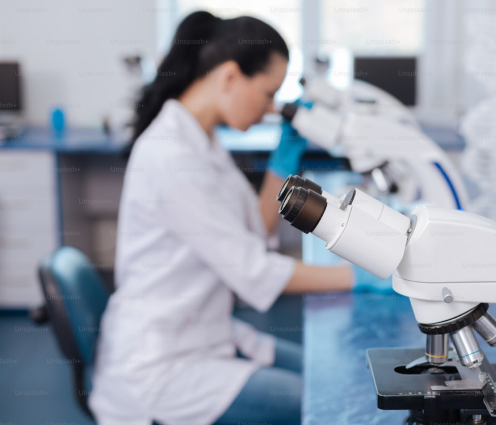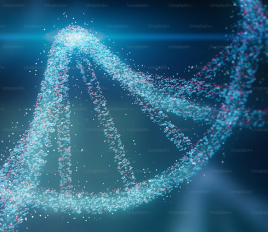

Chemistry has always been a creative science. It transforms raw matter into medicines, materials, fuels and everyday products that define modern life. It is also, now more than ever, an industry at the heart of the sustainability challenge.
From single-use plastics to hazardous solvents and fossil-derived feedstocks, chemistry has long been both an enabler of progress and a source of environmental strain.
Today that duality is driving a transformation. A new generation of scientists and engineers are reimagining how we make, use and reuse materials. The principles they are guided by are that of green chemistry and the circular economy. This shift represents one of the most profound changes in the chemical sciences in decades, and it is set to reshape the future of manufacturing, regulation and talent alike.
Redefining Chemistry: From Linear to Circular
Traditional industrial chemistry has operated in a linear model: extract, produce, consume and dispose. The circular economy aims to close that loop, designing systems where waste becomes feedstock and materials flow continuously through cycles of use and regeneration.
Green chemistry provides the scientific framework for achieving this shift. It focuses on reducing or eliminating hazardous substances, minimising energy consumption, and designing molecules that are safe, efficient and degradable by intent. The philosophy is not just about cleaning up existing processes but about rethinking chemistry from the molecular level up.
The challenge is significant. Many of the materials that define modern life - plastics, coatings, adhesives, textiles - are inherently persistent. Their durability is their strength and their weakness. Replacing them with sustainable alternatives requires not just substitution, but innovation in structure, synthesis and lifecycle design.
Bio-Based Feedstocks: Replacing Fossil Carbon
One of the most active areas of research is the shift from petrochemical feedstocks to bio-based alternatives. Instead of extracting carbon from the ground, scientists are sourcing it from renewable biomass - plants, algae, agricultural waste or even captured carbon dioxide.
Lignocellulosic biomass, for example, can be broken down into sugars and converted into platform chemicals such as ethanol, lactic acid or succinic acid, which in turn can be transformed into bioplastics, solvents or surfactants. Similarly, researchers are exploring microalgae as a renewable source of lipids and pigments, offering routes to sustainable polymers, dyes and coatings.
The transition is not straightforward. Bio-based does not automatically mean sustainable. Feedstock cultivation must avoid competition with food supply, deforestation or excessive land and water use. But advances in industrial biotechnology - using engineered microbes and enzymes to produce chemicals efficiently under mild conditions - are helping to address these challenges, offering pathways with lower carbon footprints and fewer toxic by-products.
Catalysis: The Engine of Sustainable Chemistry
At the heart of this transformation lies catalysis - the science of accelerating reactions while minimising waste. Catalysts make up a quiet revolution within chemistry, enabling processes that are cleaner, faster and more selective.
In sustainable materials development, catalysts are being used to drive polymer recycling, CO₂ conversion, and biomass valorisation. For instance, enzymatic catalysis has opened new routes for polymer degradation, allowing enzymes such as PETase to break down polyethylene terephthalate (PET) - the most common plastic used in bottles and packaging - into its original monomers. These can then be repolymerised into high-quality material, achieving genuine chemical recycling rather than simple downcycling.
In parallel, heterogeneous catalysts are being designed to turn CO₂, the most abundant greenhouse gas, into valuable chemicals such as methanol, formic acid or even fuel precursors. Advances in electrocatalysis and photocatalysis are allowing these transformations to occur using renewable electricity or sunlight, linking chemical manufacturing directly to clean energy.
Catalysis, in many ways, is the bridge between sustainability and scalability - the key to making green chemistry commercially viable.
Designing for Degradation and Recyclability
One of the biggest barriers to sustainability in materials science is end-of-life management. Most plastics, once produced, persist for centuries because their molecular structures resist natural degradation. Green chemistry seeks to change this by designing for disassembly - building degradability and recyclability into materials from the start.
Degradable polymers, for example, can be engineered with hydrolysable or enzymatically cleavable linkages that break down under controlled conditions. Polylactic acid (PLA) and polyhydroxyalkanoates (PHAs) are early examples of such materials, derived from renewable feedstocks and capable of biodegradation under industrial composting.
At the same time, researchers are exploring dynamic covalent chemistry, where bonds within materials can reversibly break and reform, enabling repair, reshaping and full recycling. The aim is to create plastics and composites that behave more like metals - able to be remoulded and reused repeatedly without loss of quality.
Cleaner Solvents and Processes
Solvents are often the largest source of waste and toxicity in chemical manufacturing. Green chemistry promotes the use of benign alternatives such as supercritical CO₂, water, ionic liquids and deep eutectic solvents. These options can reduce volatility, flammability and environmental impact while improving reaction efficiency.
Process intensification techniques such as continuous flow chemistry are also playing a major role. By moving away from traditional batch processes, continuous systems can optimise energy use, improve reaction control, and significantly cut waste. For the pharmaceutical and fine chemical industries, these innovations are leading to safer, faster and more reproducible production methods.
Regulatory and Market Momentum
Sustainability in chemistry is not driven by science alone. Regulation, investment and consumer demand are accelerating the transition.
The European Green Deal, the UK’s Net Zero Strategy and global frameworks like REACH and ESG reporting are creating powerful incentives for cleaner chemistry. Companies that fail to adapt risk supply chain exclusion, reputational damage or regulatory penalties. Those that embrace change, however, are discovering competitive advantages - lower operational costs, stronger brand reputation and improved investor confidence.
In parallel, large-scale initiatives such as Target 2045 (which aims for net-zero carbon chemical manufacturing) and public-private partnerships are fostering collaboration across academia and industry. The message is clear: sustainability is no longer a niche concern but a strategic imperative.
The Human Element: Skills for a Greener Lab
Behind every sustainable innovation is a team of people. As chemistry evolves, so too must its workforce. The shift to greener processes demands chemists who are fluent not only in synthesis and analysis but also in systems thinking, life-cycle assessment, and interdisciplinary collaboration.
At HRS, we see this change reflected in the hiring landscape. Employers are seeking scientists with hybrid expertise - chemists who understand biology, engineers who grasp environmental modelling, and leaders who can unite technical teams around a common sustainability vision. The laboratories of the future will depend as much on culture and leadership as on catalysts and polymers.
Developing and attracting such talent is essential if the promise of sustainable chemistry is to become reality.
Chemistry as a Force for Regeneration
The story of chemistry has always been one of transformation - of turning the ordinary into the extraordinary. Now, the field faces its most important transformation yet: turning chemistry itself into a regenerative science.
Sustainable materials, green catalysis and circular design are not separate goals but parts of a single vision: a world where every reaction adds value rather than waste. It is a vision powered by innovation, guided by responsibility, and driven by people who believe that progress and preservation can coexist.
Chemistry created the modern world. Now, it has the chance to sustain it.


Looking for a New Role – or Searching for Top Talent? Let’s Talk
Whether you're exploring your next career move or looking to hire skilled professionals, HRS is here to help.
We connect ambitious individuals with exciting opportunities across science, technology, and innovation-led sectors. From early careers to executive search, our expert recruiters work closely with both candidates and employers to ensure the perfect match.
If you're hiring, we’ll help you find the right people. If you’re job hunting, we’ll help you take the next step. Browse our latest jobs or get in touch to find out how we can support you.

